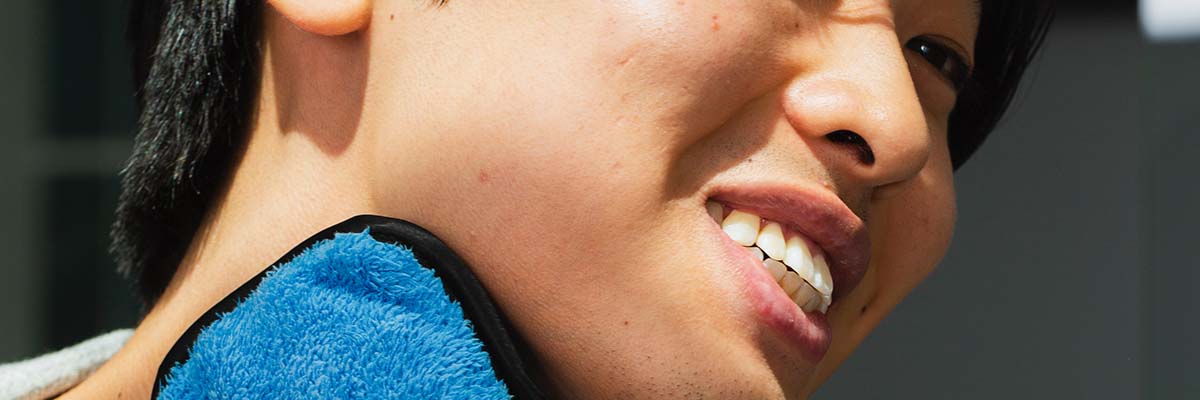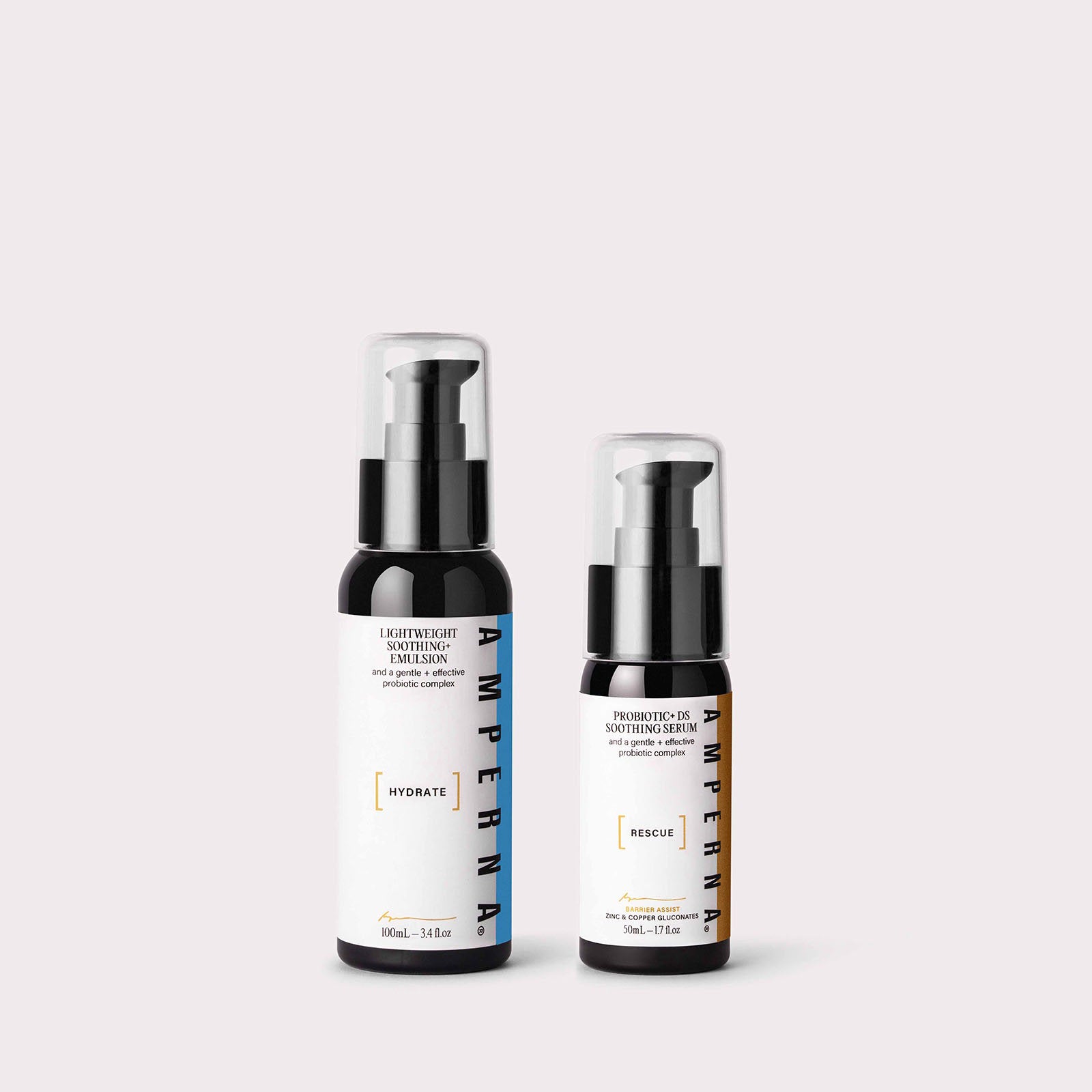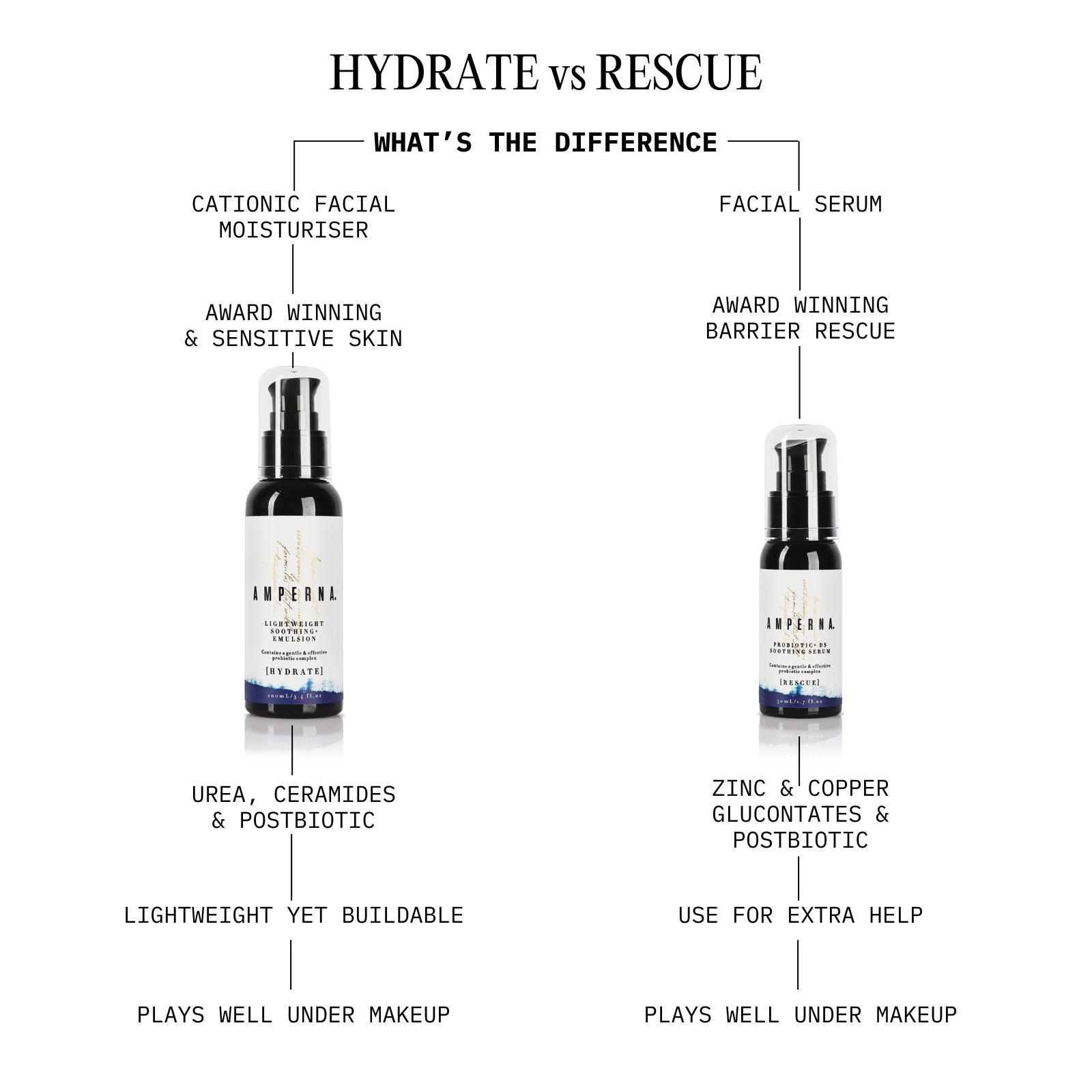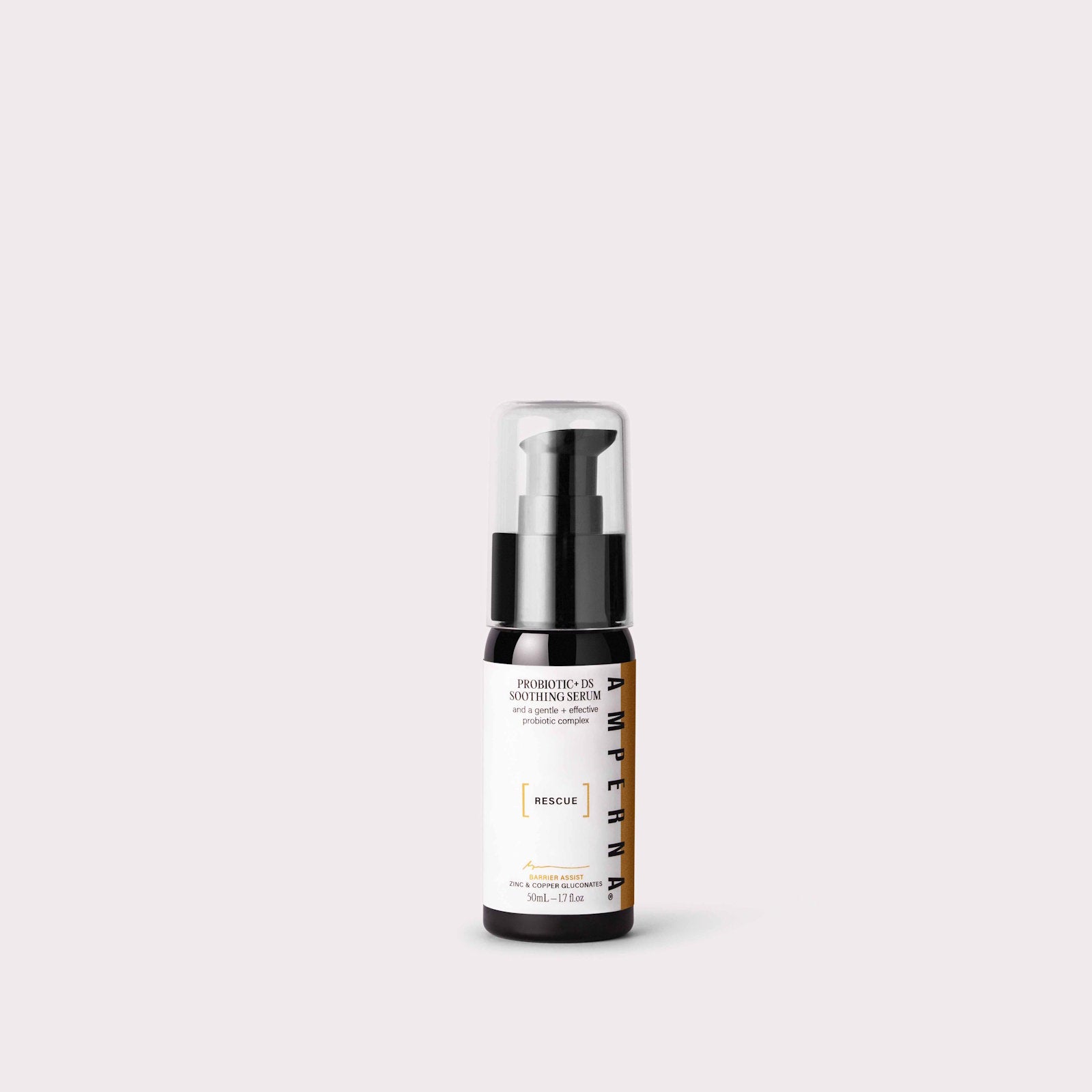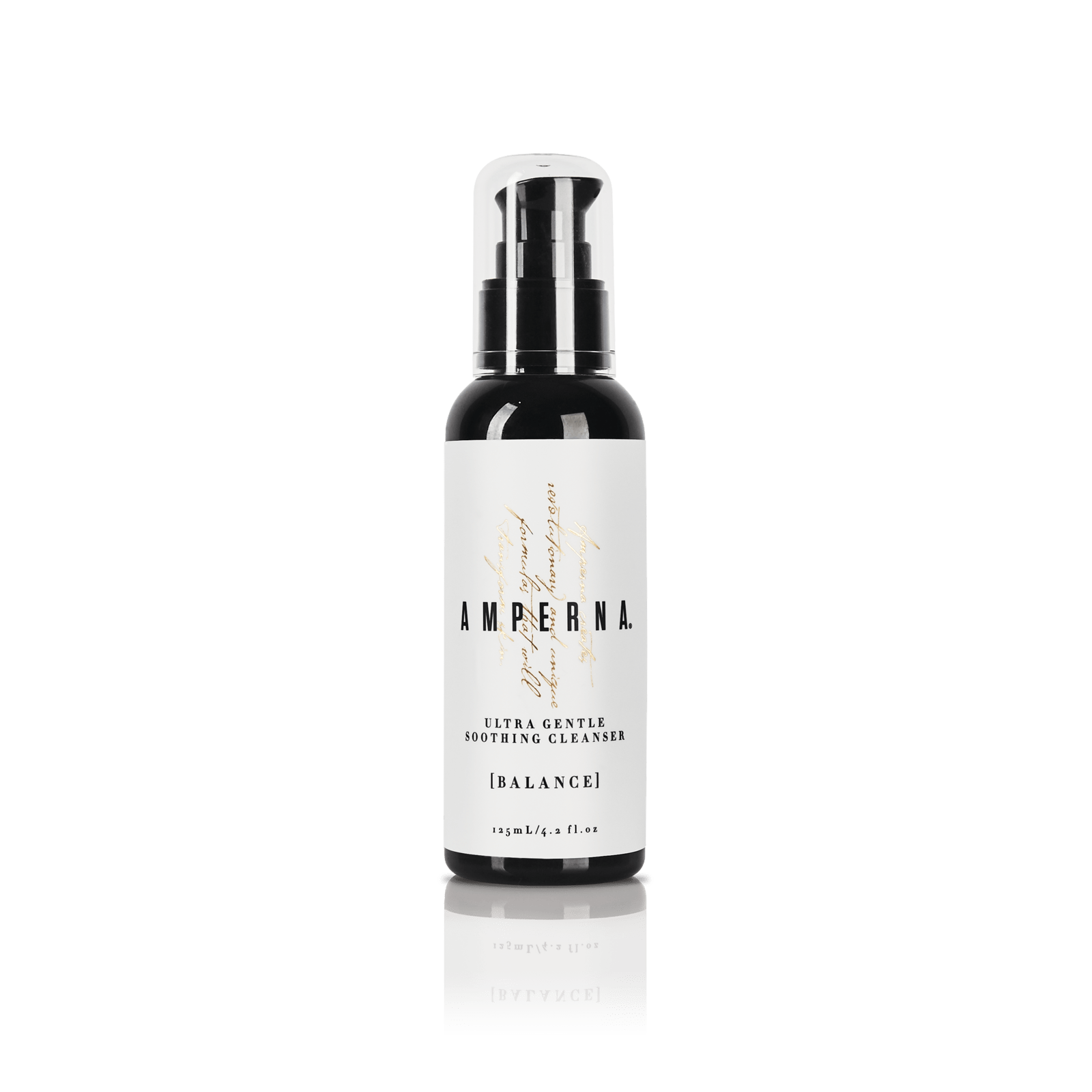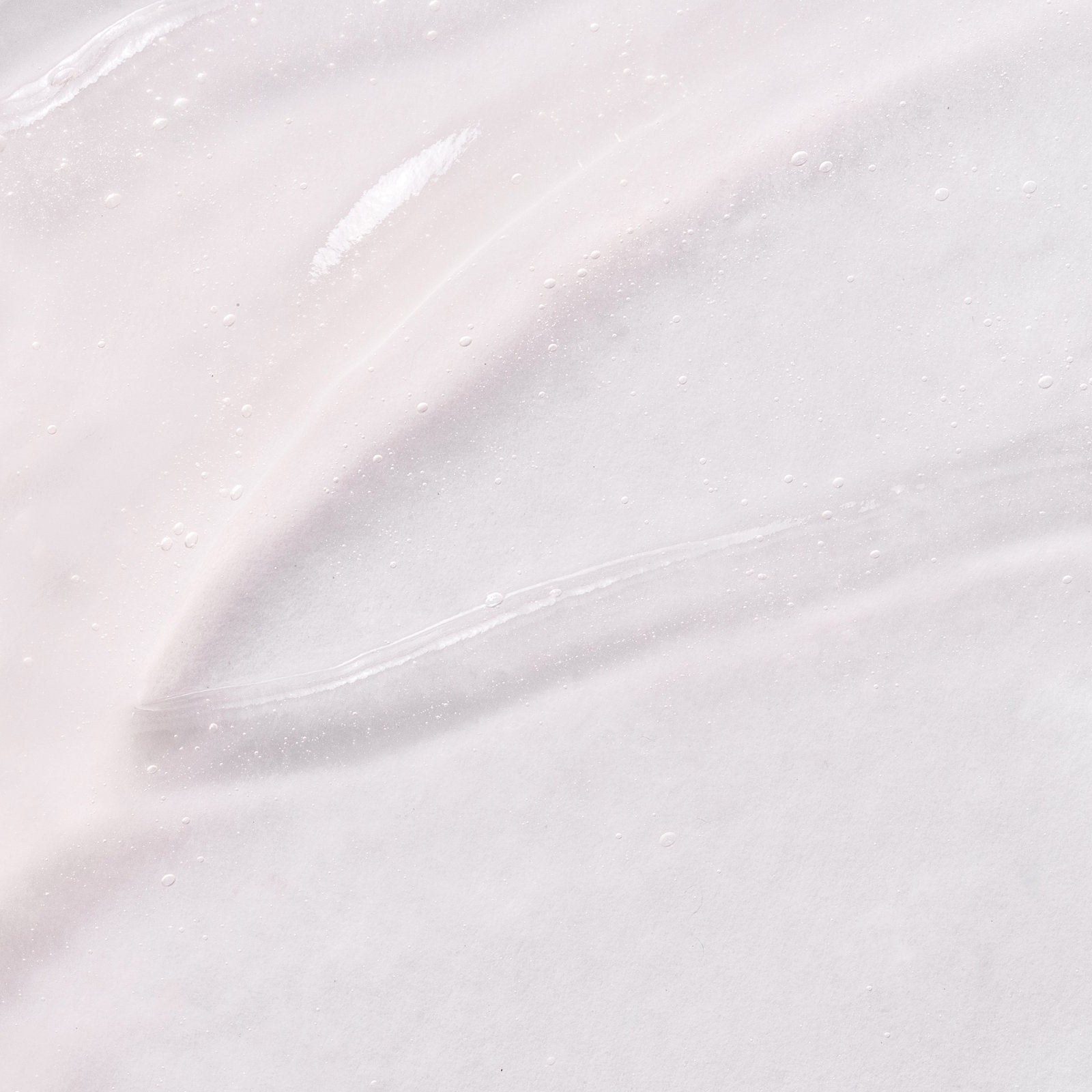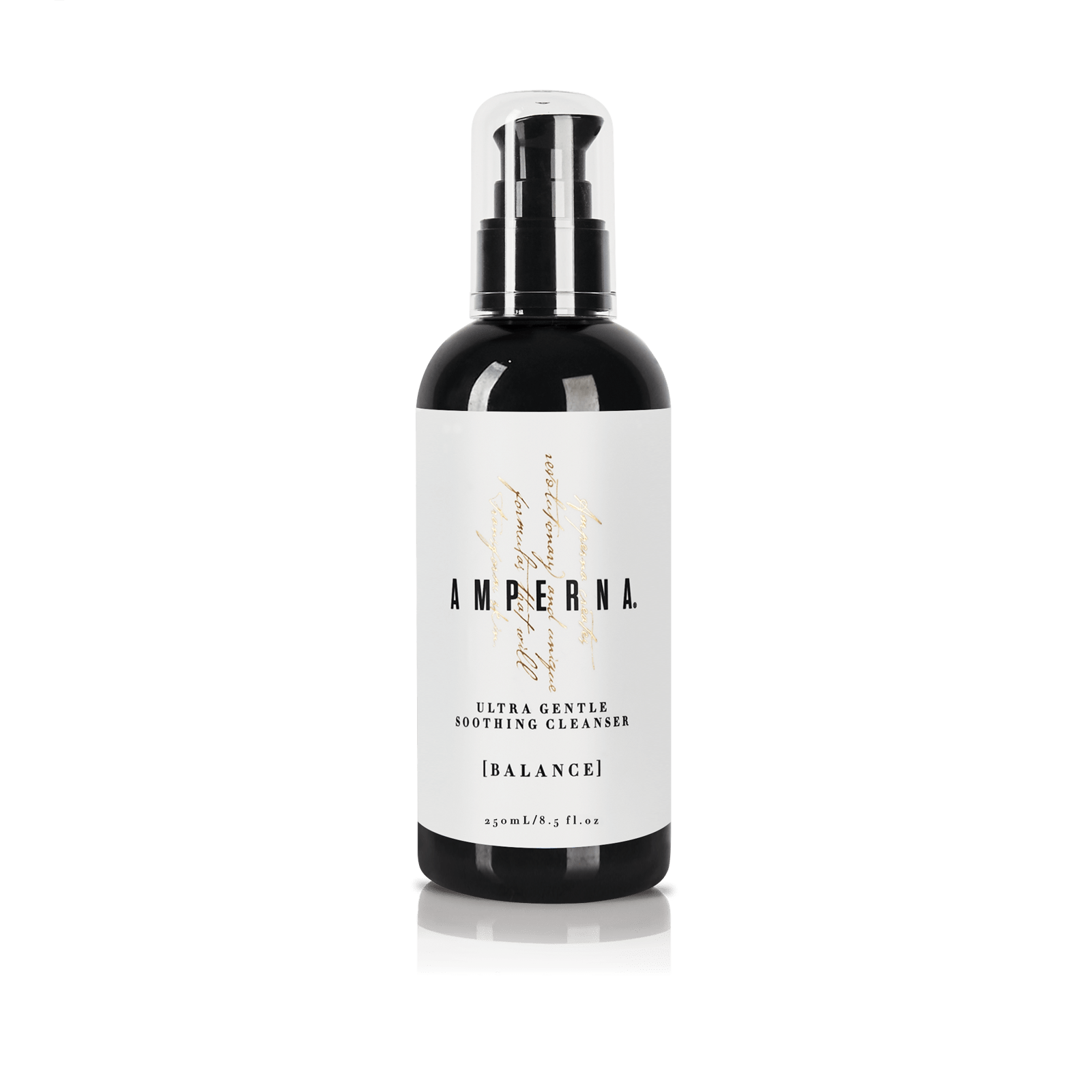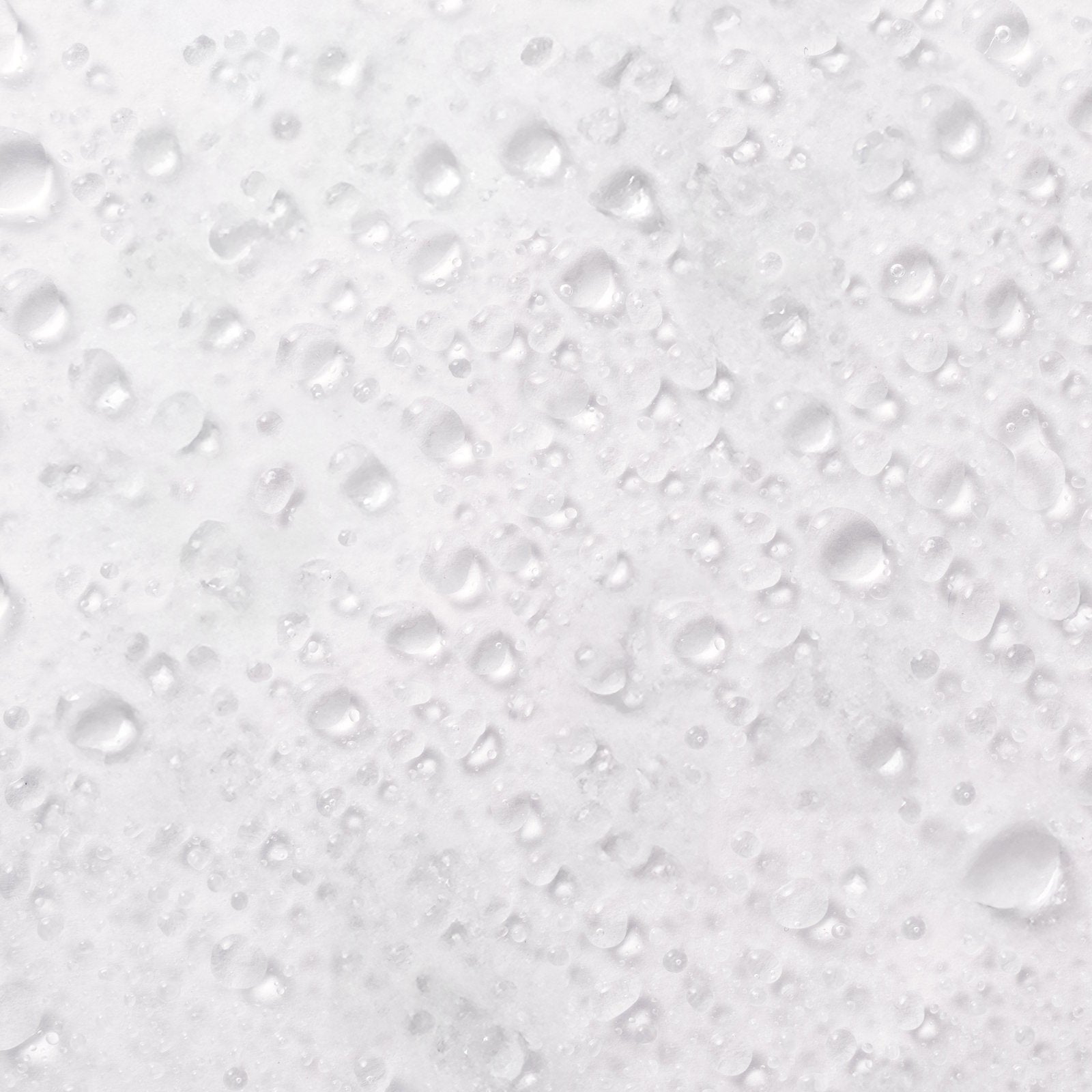AMPERNA®S' Most Asked Question
AMPERNA® has proudly helped thousands of people with their skin concern journeys ranging from acne, perioral dermatitis, eczema, rosacea, and psoriasis. I mention the word ‘journey’ as skin health isn’t a quick fix miracle that happens overnight. It’s a process that requires consistency, patience and a gentle yet effective approach.
How long until you see improvements in your skin will depend on each individual and their own unique skin health. Everyone’s skin journey is rarely linear, so what works for one person in a certain timeframe may not happen as quickly for another.
So with that in mind let’s take a quick overview of how the skin works.

The Skin
The body's largest organ is made up of all kinds of components, including water, protein, lipids, minerals and vitamins. Its main job is to protect you from the constant attack of infections and germs. It is continuously replacing old cells with new ones to keep your body on top of its game. Our skin is made up of three layers, the epidermis, dermis, and hypodermis (subcutaneous tissue), all of which have specific functions.
The outermost epidermis is responsible for producing new skin cells, protecting the body from unwanted substances, and retaining moisture to keep the skin hydrated.
The middle dermis is responsible for supporting and strengthening the skin. It helps nourish the epidermis and regulate the skin temperature.
The innermost subcutaneous tissue (hypodermis) gives the body its contoured shape and connects the skin to the internal organs. It also stores fat cells for energy and helps regulates the body temperature.
The main functions of our skin include:
- Sustains vital processes and nutrients within the body, while protecting the deeper layers
- Provides a waterproof barrier preventing pathogens from entering the body
- Provides a shield from the sun’s ultraviolet radiation
- Regulates body temperature via sweat
There are two primary proteins that are utilized in the dermis to give your skin its structure and support. These are collagen and elastin. Collagen is the most abundant protein and is responsible for your skin’s firmness and structure. The breakdown of elastin allows your skin to bounce back into place after being stretched, which can lead to some of the common signs of aging
Our skin is continuously renewing itself; this is known as the skin cycle.
What happens during a skin cycle?
The skin cycle is a critical natural process by which new healthy skin cells form at the deepest layer of the epidermis and replace dead ones on the surface of the skin. As the new skin cells make it’s journey to the outer layer it joins your skins barrier as it matures, by this point it flakes off and the process begins again.
A skin cycle is usually every 28 days but can vary with each individual and is affected by factors such as age, hormones, stress levels and overall skin health. At the age of 19-21 the process can take 14-21 days. This skin cycle slows to about 45-60 days in our 40s and 50s. It can further slow to about 60-90 days in our 50s and 60s.

Why understanding your renewed cell cycle is important for your skin journey?
To reap the full benefits of a skincare product your skin requires the time to go through a few natural cycles of renewal. Allow your old skin cells to slough off completely so newly rejuvenated ones can shine through with the added nourishment from your skincare ingredients.
It will usually take 2-3 skin cycles to show improvements, but this depends on the length of your skin cycle, your skin concern, and the type of product you are introducing. Stay patient as your skincare needs a chance to amend the health and strength of your skin cells.
So what about people who are suffering from skin concerns like dermatitis, eczema, or acne?
At AMPERNA® we completely understand and empathise that people want fast results and can be disheartened if a product doesn’t work straight away. Kiri, (AMPERNA® founder and owner) created AMPERNA® products to help her own skin.
Kiri’s mission is to help as many people with their skin concerns as possible. Both topically and holistically, without the use of prescribed medication.
To be able to answer a “timeframe” specifically for each skin concern would be impossible… There are too many variables at play.
Everyone’s skin is different.
Everyone’s overall health is different.
Everyone’s response to skincare products is different.
But here are a few key points and related blog posts you may refer to if you’re suffering from skin conditions.
How long will it take to help my…
Perioral Dermatitis
It may take a few weeks to months for perioral dermatitis to clear up, depending on the severity and your individual triggers.
Acne
What type of acne are you suffering from primarily? Once this is identified you can have an action plan and realistic expectation in place to help your skin.

Eczema
Eczema is a lifelong skin condition that people may grow out of or may have to manage ongoing. Ultimately depending on the underlying root cause of your eczema. There are many ways for you to alleviate eczema flare up symptoms without the use of topical steroids.
Rosacea
Rosacea is a chronic, sometimes uncomfortable condition that affects skin of your face. Depending on your severity and the topical treatments that you use, it might take several weeks or months to notice improvement in your symptoms.
Psoriasis
Psoriasis is a long-term inflammatory disease that affects the skin and nails. This skin condition has no cure but there are many ways to help treat symptoms and keep patches under control.
Transparency is of uttermost important for AMPERNA®, and consumers can readily find our customer reviews (both positive and not so positive) on our website.
Below is a notable example of how giving AMPERNA® skincare enough time to see results, even if they do not happen quickly.
18/04/2023 Amy Ludemann
Life changing!!
I have been battling with a flare up on my face since getting Covid over a year ago. Initially it was diagnosed as a type of rosacea by the doctor, and I was prescribed a topical steroid cream. At first this seemed to help, however over time I noticed the rash spreading to other areas of my face and found myself using the steroid cream more frequently.
I stumbled across Amperna doing some online research about probiotics and as I read Kiri’s story and looked at the photos I suspected that the steroid cream use had morphed my skin problem into Perioral Dermatitis covering my chin, and spread to around my nose, eyes and the absolute worst… my eyelids. I decided to try Amperna and it has been absolutely life changing! After just 4 weeks already my skin is soothed, and I am no longer suffering itchiness and pain. While there are still smaller red patches and I have slight flare ups the difference in such a short time is absolutely incredible.
I do want to say to those that say it has not worked after a few weeks… stick at it. My progress has happened in stages, and it got worse before it got better. I have also felt like it has been two steps forward one back at times. As I will have days where it looks amazing and then sudden flare ups. Each time it flares though I do believe once it settles it is better than before. I have also taken a holistic approach and am taking both zinc and probiotic supplements to support my skin healing and address any underlying gut health/immunity issues that may be contributing to my skin issues.
The photos are taken only 4 weeks apart. The progress in such a short time is incredible. I cannot wait to see what the next 4 weeks brings!! Thankyou Kiri your amazing products gave absolutely changed my life.

Which brings us to the next point, (being the most critical point for this post) “How long will it take to help your skin?”. If, (like Amy's experience) you have been using topical steroids or immunosuppressants? And your symptoms have rebounded, or you suspect you are going through topical steroid withdrawal.
Helping your skin after topical steroid reactions
The first thing Kiri always asks is ‘How long have you been using topical steroids for?”
This is crucial information and the starting point for Kiri to explain to her clients that if topical steroids have been used (or misused) for a long period of time, the skin healing process may take an even longer time. In some cases many months to even years, depending on the original skin concern and current reaction or rebound your skin is having.
For Kiri’s own personal skin journey and TSW (topical steroid withdrawal) she discovered it took a combination of health and wellness measures to help her acne and perioral dermatitis. She changed her diet to be anti-inflammatory based, improved her gut health by taking probiotic supplements and consumed fermented foods, as well as increased her exercise regime and measures to improve her stress levels.
On top of developing and using the AMPERNA® skincare range which is a ‘steroid free’ alternative to help sensitive skin concerns.
Like Amy’s experience with her skin (mentioned above) the topical steroid seemed to help in the short term but then created additional skin problems on top of her existing one.
The vicious cycle Amy started to face was using the topical steroid more frequently to suppress the body’s immune defence, which is when you can fall into the trap of your skin becoming addicted. Or what happens in most cases is that your doctor or dermatologist prescribes you stronger steroid treatments. Which should never be used as a long term solution.
We’re so happy to be able to help thousands of people, like Amy, wean off topical steroids safely and get their skin back to it’s healthiest version, gently and effectively.
You can read more about TSW on the National Eczema Association website
Topical steroid withdrawal: Everything you need to know (nationaleczema.org)
